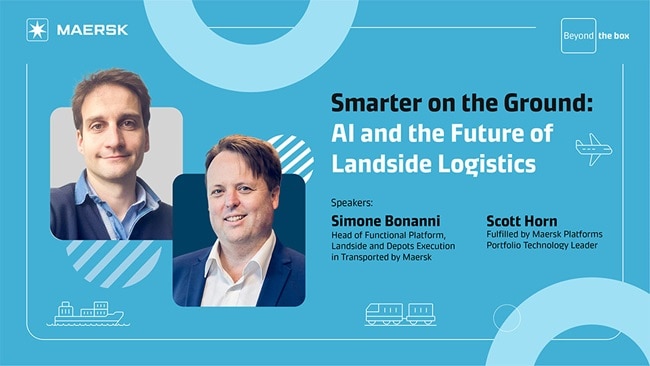For retailers, customers are at the very centre of their ecosystem and their core goal is to gain their consumers attention, earn their business and maintain their loyalty. More and more retailers have taken to adopting digital tools to improve efficiency and effectiveness of their operations as well as how they interact with their consumers. Each technological advancement redefines the possibilities in how a retailer can achieve their ambitions.
The market has evolved from telephone orders to e-commerce websites and mobile apps. Internet of Things and AI are further steps in this evolution process that have further expanded the ways in which a retailer can reach their customers but adds more complexity in how a retailer can define a seamless customer experience – in short, a logistical nightmare for any retail business.
Today, having an omnichannel business strategy is more of a pre-requisite than an optional choice for retailers who want to stay competitive in the market. However, consumer behaviour, preferences and needs are constantly changing and the appearance of new products and technological and business models are constantly challenging the status quo in the market.
As technological advancements and consumer behaviours influenced the evolution of business strategies, it gave rise to an increase in buzzwords like omnichannel and omni-commerce. But there is some confusion around the definition of those terms and how exactly they’re different from each other. So let’s explore what their meaning and if there is any difference between the two.
What does Omnichannel mean?
It is an integrated business approach of reaching the consumer across all channels in order to deliver their desired products and services in a timely, seamless and economic manner. It is quite different from the concept of ‘multichannel’; omnichannel refers to being present on all channels while multichannel indicates being present in more than one channel.
The rise of omnichannel can be traced back to the need to blend the retailer’s sales and marketing efforts. It aims to create a consistent brand experience for the consumers regardless of which channel they use to interact with a retailer or company, i.e., whether they visit or purchase from physical stores, websites, mobile apps, or social media to name a few. The goal of this strategy is to empower consumers to be able to switch between platforms and still feel like their overall experience was the same – convenient and smooth.
With the use of data and analytics, retailers can analyse consumer purchase patterns which in turn helps them with planning their omnichannel logistics and selecting the right kind of omnichannel fulfilment strategies to cater to the needs of their consumers. Moreover, the data also supports marketing efforts to bring more initiatives like sales and discounts or new launches to the notice of the customers as well as make recommendations basis the preferences indicated by the consumers behaviour. Overall, omnichannel strategies helps a retailer sell to their customers across all channels and provide them a more seamless and convenient brand experience.
What does Omni-commerce mean?
Omni-commerce strategies encompass a much broader scope which includes the concept of omnichannel within it. While omnichannel is more about the idea of a unified brand presence in recognition of catering to the consumers preference for different channels, omni-commerce refers to a more comprehensive business approach to provide a seamless and unified shopping experience for consumers from end-to-end. This includes the integration of various systems, processes and data across multiple channels as well as the optimisation of technology to create a consistent and personalized consumer experience.
Omni-commerce is not just about clearly understanding the needs of the consumer in order to create an appealing solution that is in alignment with these needs and reaching out to them on all possible channels. It is also about simultaneously integrating all channels by carefully selecting and adjusting the usage of each respective platform to optimise their performance and gain the maximum benefit.
An organization that is looking to create a truly memorable retail experience for its consumers looks at influencing the number of unique buyers, the purchase frequency and the average sales per visit of a consumer. For this, their focus needs to be on leaving the consumers feeling like their time has been well spent and not wasted.
This sounds very simple in theory, but in reality, is far more complex and requires the activation of multiple functions in a retailer’s business. A lack of stock availability of a preferred item, payment platform challenges, delay in delivery, challenging return or exchange experience can leave the customer with a bitter taste and feeling disinterested in pursuing any more business with that brand.
This is where omni-commerce strategies come into play. It goes further than integrating online and offline channels, it encompasses the entire customer journey with a retailer including browsing, researching, wish-lists, purchases and port-purchase experience. It drives how the entire business organisation of a retailer can help contribute to tailored and personalized shopping experiences based on the consumers’ needs and preferences.
In closing, while it is common to see the terms ‘omnichannel’ and ‘omni-commerce’ being used interchangeably, each term focuses on a different area and thereby they have slightly different meanings. Omnichannel recognizes the consumers preferences for different channels and creates a unified brand presence to deliver a smooth consumer experience across these channels. Omni-commerce on the other hand takes a more holistic approach to providing a seamless and personalized shopping experience from end-to-end; it creates a memorable world of ease and convenience from the awareness to satisfaction stage of the consumer journey which helps the retailer to gain the consumer’s appreciation and seal their loyalty.
未来,您想随时了解必读行业趋势吗?
您已经完成了,欢迎“登船”!
很抱歉,发送您的联系请求时出现问题。
请查看表单字段,确保所有已正确填写所有必填信息。如果问题仍然存在,请联系我们的支持团队以获得进一步的帮助。
未来,您想随时了解必读行业趋势吗?
使用此表格注册,即可直接在您的邮箱中接收我们的洞察见解,进入一个真正的综合物流世界。简单操作,即从我们为您量身定做的精选文章中获得启发,了解相关行业洞察信息。您可以随时取消订阅。













